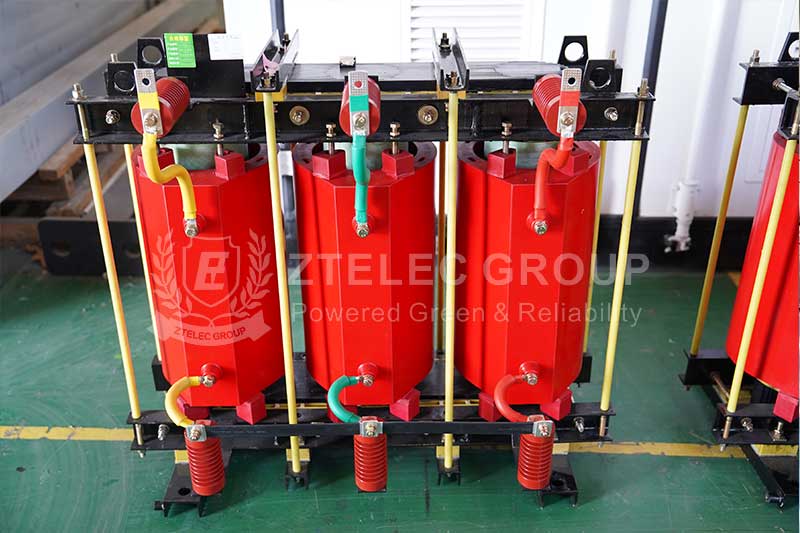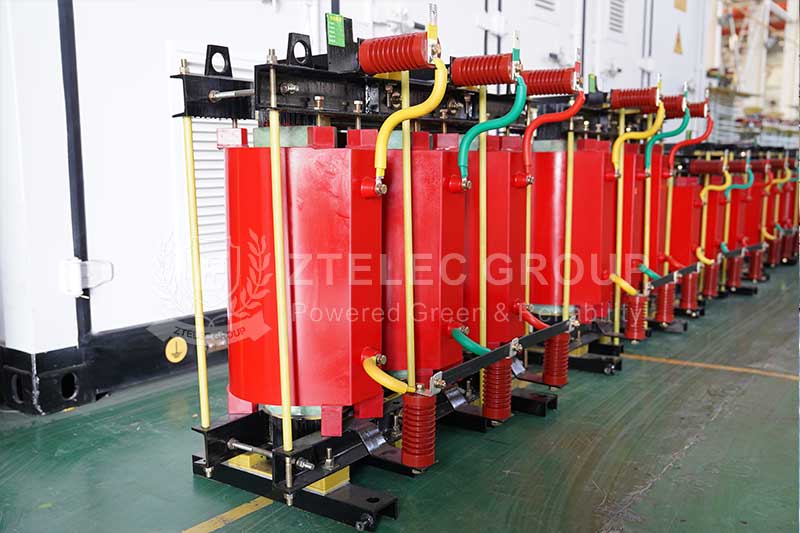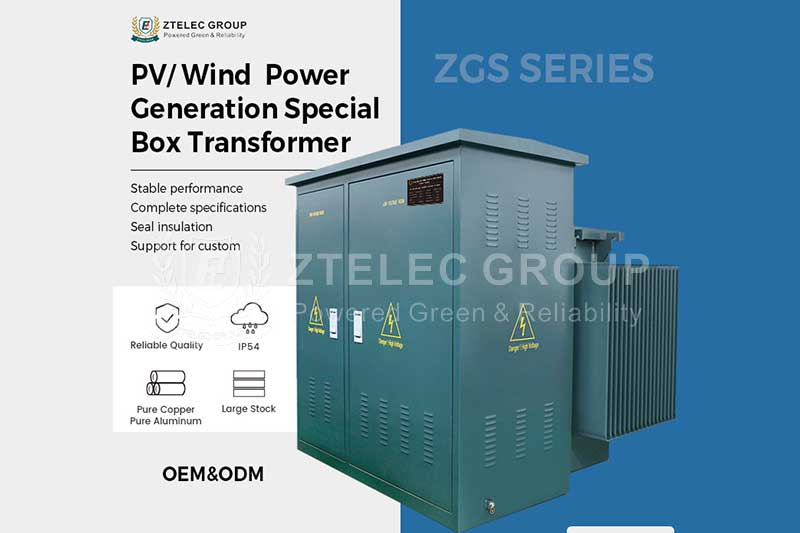How to correctly select the rated capacity of a dry-type transformer?
Time:2025-02-6 Auther:ZTelec-www.ztelectransformer.com
Correctly selecting the rated capacity of a dry-type transformer is an important part of ensuring efficient and stable operation of the power system.
1. Load demand
Determine the required rated capacity based on the actual load demand. It is necessary to consider the load type, load power, load type (such as motors, lighting loads, etc.), and load peak demand, etc. At the same time, predict the growth trend of the load in the future period of time, so as to select a transformer with sufficient capacity and avoid frequent replacement.
Load type: Different load types have different requirements for transformers. For example, motor loads usually have large starting currents and impact load characteristics, while lighting loads are relatively stable. Therefore, when selecting a transformer, its rated capacity needs to be determined according to the load type to ensure that the transformer can withstand the current impact and power demand of the load.
Load power: Load power is the direct basis for selecting the rated capacity of the transformer. By calculating the power of the load, the required transformer capacity can be obtained. It should be noted that the power factor of the load should be taken into account during the calculation process, because the power factor will affect the actual output power of the transformer.
Load type: Load types include single-phase loads and three-phase loads. Different types of loads have different requirements for transformers. For example, a single-phase load requires a transformer to provide single-phase voltage and current, while a three-phase load requires a three-phase voltage and current. Therefore, when selecting a transformer, its number of phases and rated capacity need to be determined according to the type of load.
Peak load demand: Peak load demand refers to the maximum power that the load may reach during a specific period of time. When selecting a transformer, the peak load demand needs to be taken into account to ensure that the transformer can also meet the load requirements during peak hours. At the same time, the volatility and periodic changes of the load also need to be taken into account to more accurately determine the rated capacity of the transformer.

2. Overload capacity
Under some special working conditions, the transformer may need to work under short-term overload. Overload capacity refers to the ability of the transformer to operate safely when it exceeds its rated capacity. Generally speaking, the overload capacity of the transformer is related to factors such as its structure, materials, and heat dissipation conditions. When selecting a transformer, its overload capacity needs to be determined based on the actual application scenario and load characteristics to ensure that the stable operation of the power system can be maintained under overload conditions.
3. Economic considerations
A rated capacity that is too large will lead to equipment waste, while a rated capacity that is too small may not meet the load requirements. It is necessary to comprehensively consider the purchase, operation and maintenance costs of the transformer and select an economically reasonable rated capacity.
4. Transformer type and design
Different types of transformers have different design parameters, such as transformation ratio, short-circuit impedance, etc. It is necessary to select the appropriate transformer capacity based on the special design requirements in the actual application.

5.Operation environment
The operating environment of the transformer, such as temperature, humidity, altitude, etc., has an important impact on the performance and life of the transformer. When selecting the rated capacity, the impact of these factors on the heat dissipation and insulation performance of the transformer should be considered.
6.Calculation method
The capacity of the transformer can be determined by calculating the maximum power of the load. The specific steps include calculating the maximum power of each phase. And then add the three-phase power and divide it by the power factor (usually 0.85) to get the total power of the transformer. Finally, select the appropriate transformer capacity.
7. Installation location
The transformer should be located in the key power consumption area as much as possible. And the power supply radius should be controlled within about 0.5 kilometers to ensure efficient power supply.




